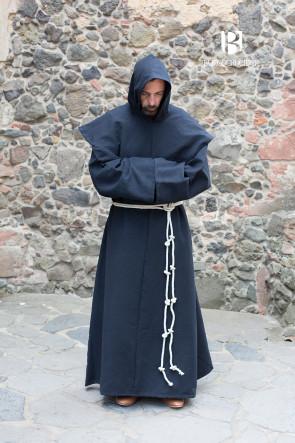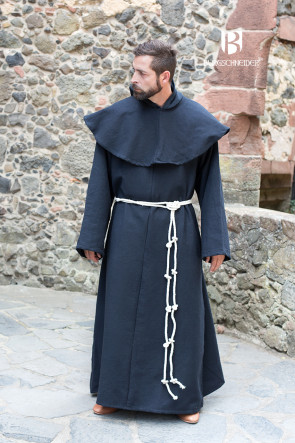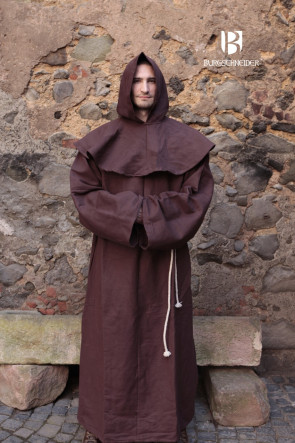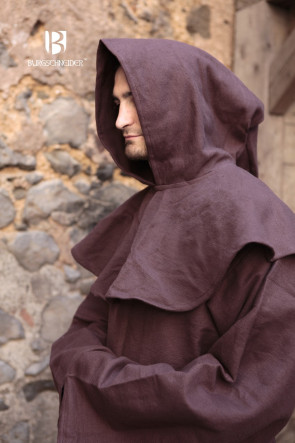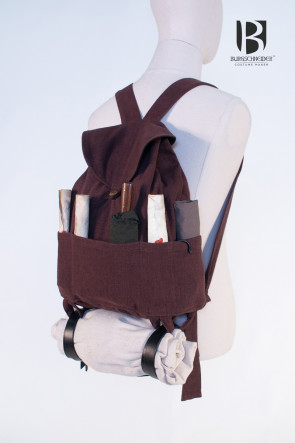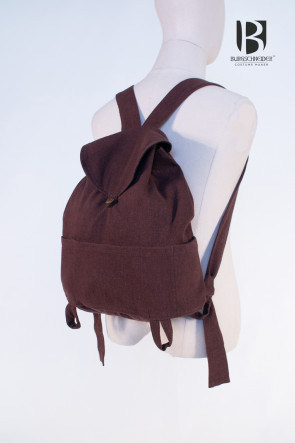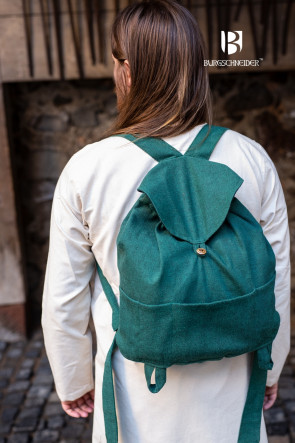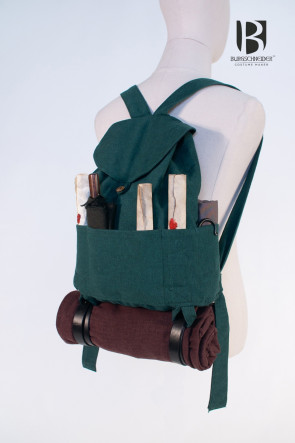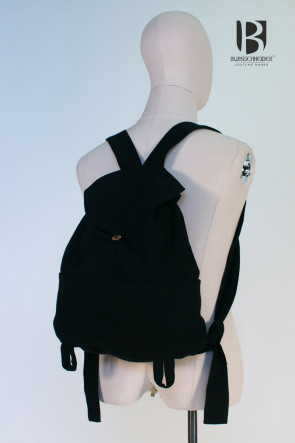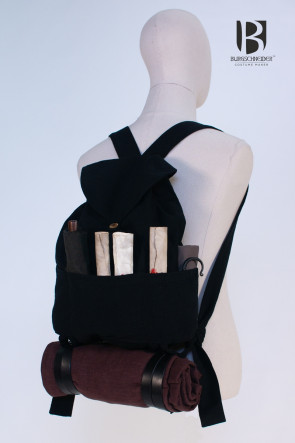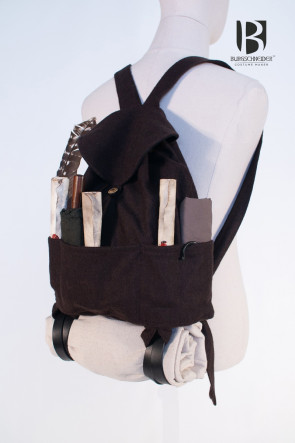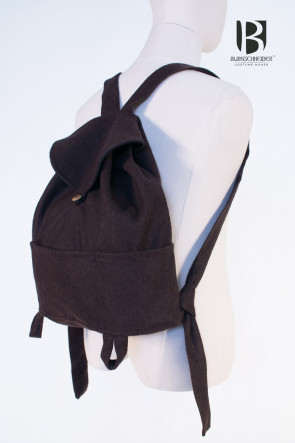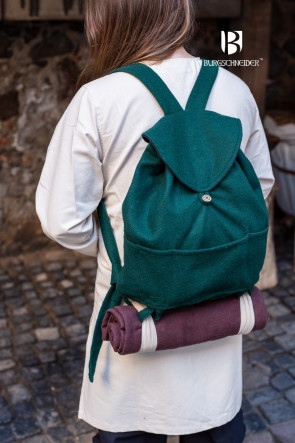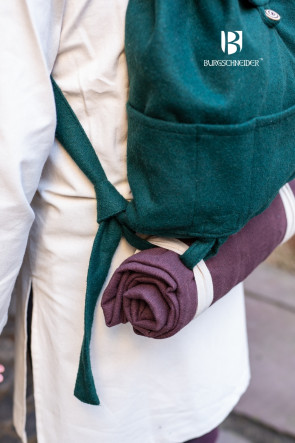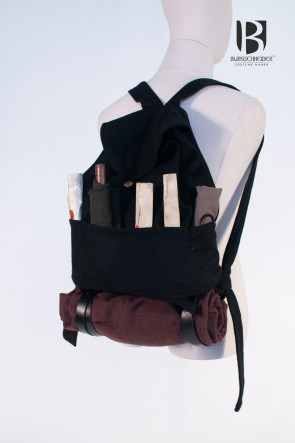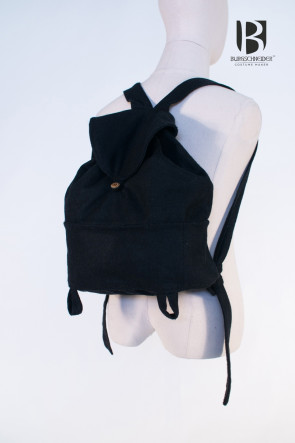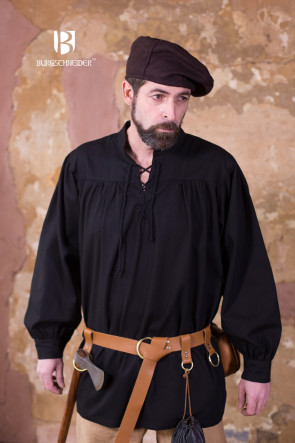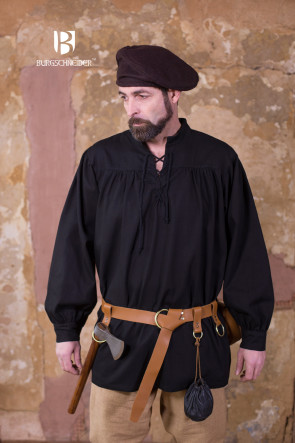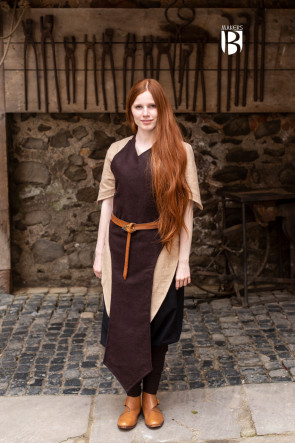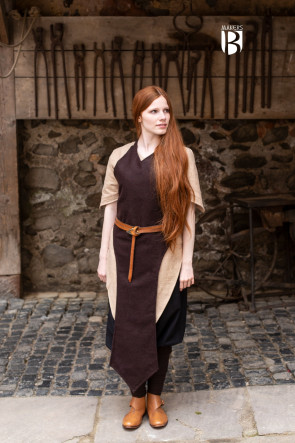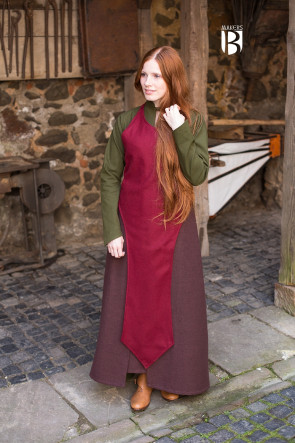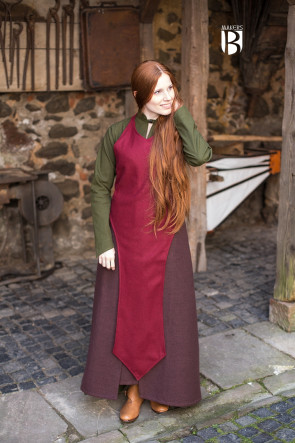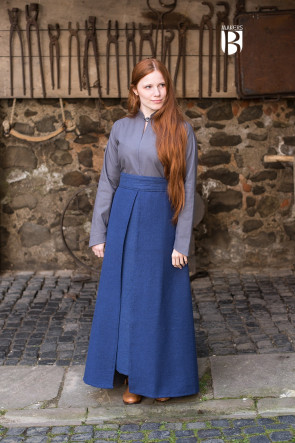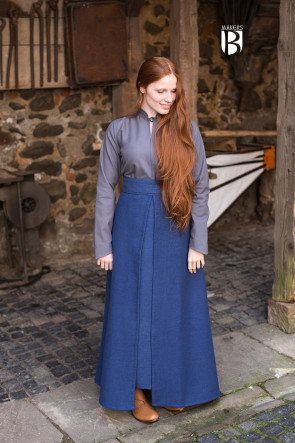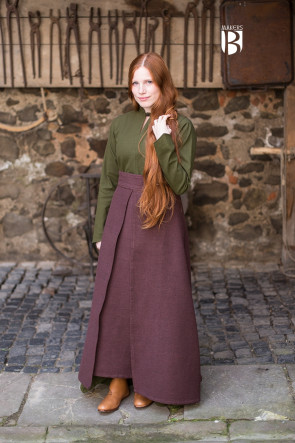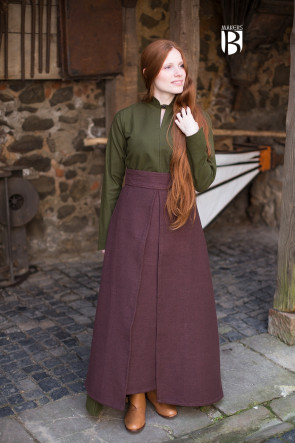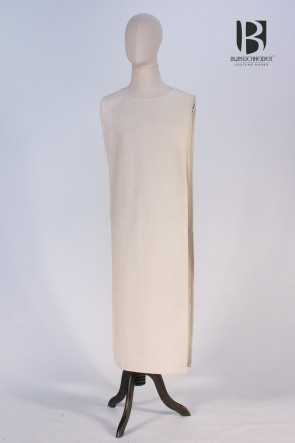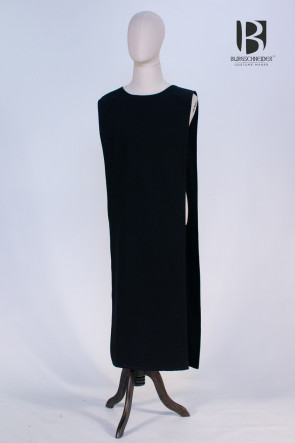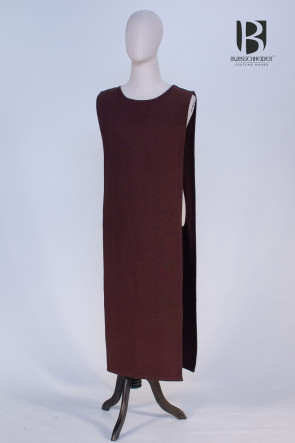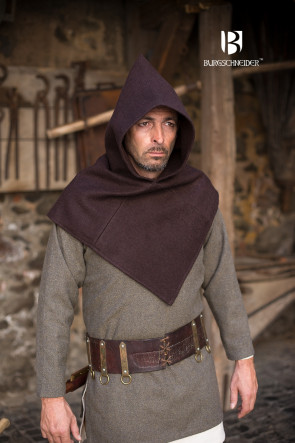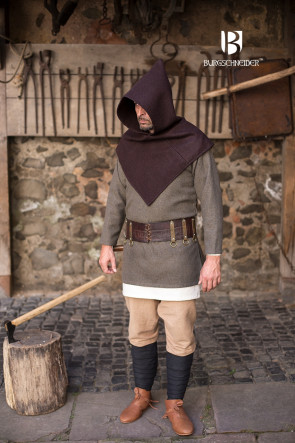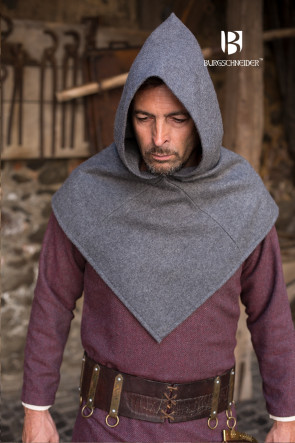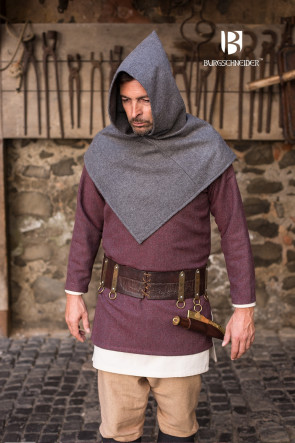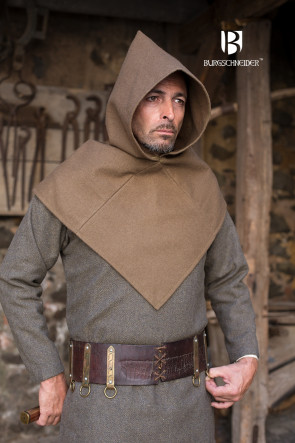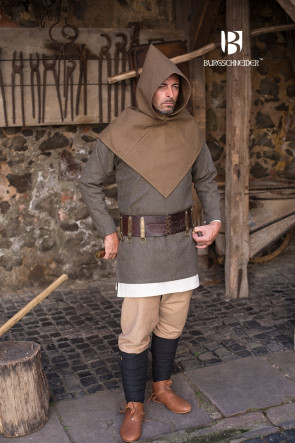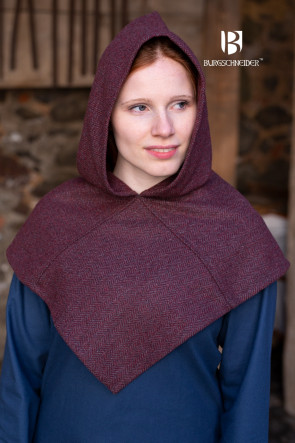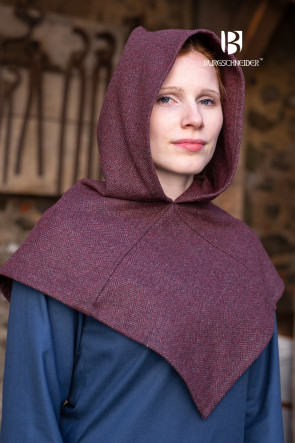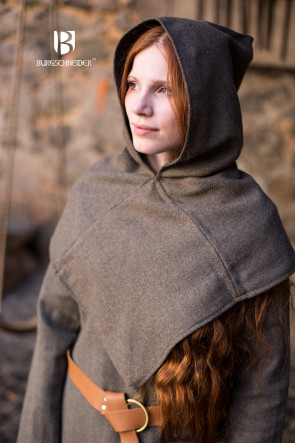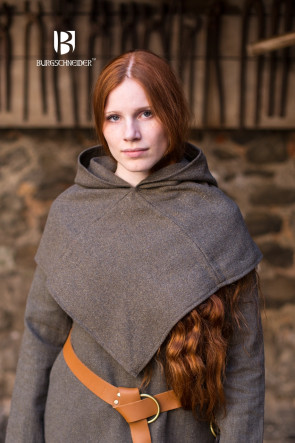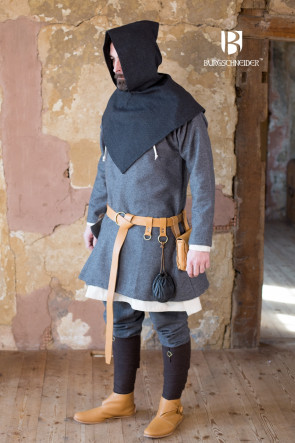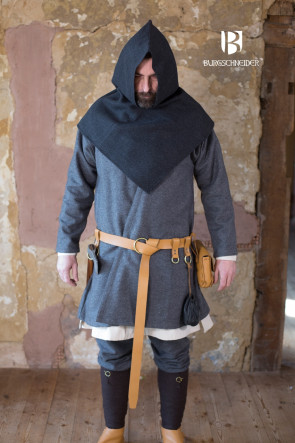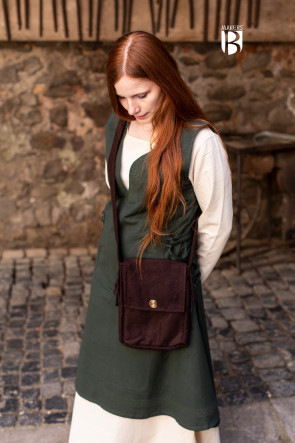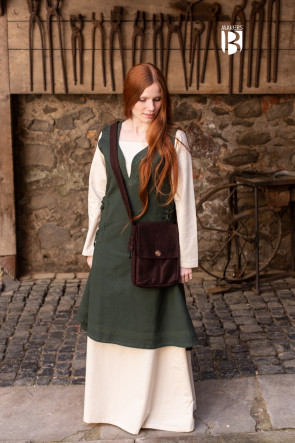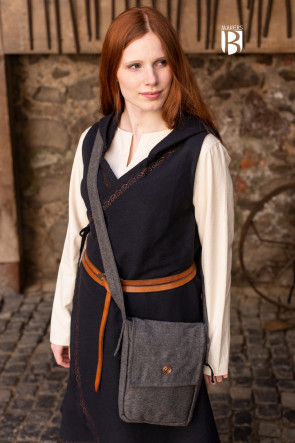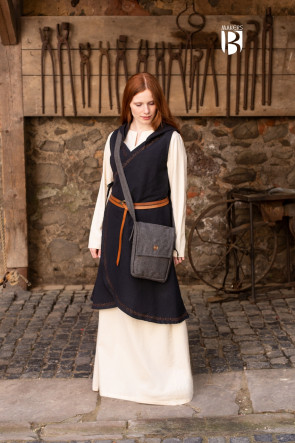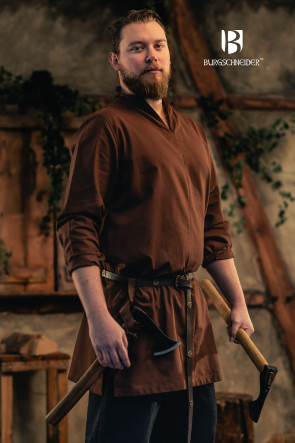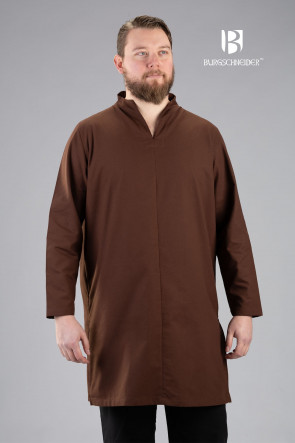Live Action Role Play
Live Action Role Play (in short: LARP) involves a form of improvisation theater that evolved from pen & paper role-playing games. LARPs usually take place at suitable locations (such as castles) and the players wear appropriate costumes (garments). They do not perform for an audience, but rather seek to have fun amongst themselves. A team of organizers prepares the event and provides the outlines of the plot, while volunteers, acting as extras, assist in bringing the world to life.
Rather akin to a murder mystery party, each attendee assumes a role that fits the theme of the game. Usually the players (LARPers) create these roles according to a set of rules codifying in-game skills and traits, equip them with clothing, and compose a background story for them. The resulting characters act freely within the game, and their actions will also decide the outcome of the story.
Live Action Role Play as a “vacation from oneself”
While people from all walks of life and of various ages attend LARP events, their reasons for doing so are often quite similar. Whether they take on ambitious roles or fancy adventures and showpiece fights, want to solve puzzles, or just want to enjoy the ambience: Live Action Role Play allows participants to detach themselves from their daily routines and reevaluate their everyday lives with new-found objectivity. Furthermore, certain aspects of role-playing can be used as an effective means for personal growth and development, which is why LARP elements are more and more frequently employed in youth education and pedagogy. In Scandinavia, they even have been incorporated into academic teaching methods.
Live Action Role Play for children and families
LARP offers a great deal of potential—especially for children. Due to the fact that Live Action Role Play is a group activity, children can easily make friends through these games and strengthen these bonds through collective experiences. A lot of LARP events offer special accommodations and activities for children, thus allowing the parents their well-deserved relaxation time as well. Quite a lot of these events are held on campgrounds on meadows and in forests, so the kids get plenty of exercise and can experience nature up close.
-
Mönchskutte Benediktus - Schwarz
- Material: 100% cotton
- Genre: Historic
- Sizes: S/M - L/XL - XXL/XXXL
- Reference: Monk Habbit
89,90 € -
Mönchskutte Franziskus - Braun
- Material: 100% cotton
- Genre: Historic
- Sizes: S/M - L/XL - XXL/XXXL
- Reference: Monk Habbit
89,90 € -
Rucksack Capsus - Braun
Rucksack Capsus
100% Cotton
- Genre: Fantastic
- Sizes: unisize
- Product Details:
- Adjustable straps.
- Functional loops for additional equipment.
- Patch pockets on the outside.
- Outer material Devon Rough 100% Cotton with lining 100% Cotton
- Decoration not included.
- The colours shown may differ from the actual colours depending on the monitor and resolution of your computer.
- Please note that cotton fabrics may shrink when washed!
25,13 € -
Rucksack Capsus - Grün
Rucksack Capsus
100% Cotton
- Genre: Fantastic
- Sizes: unisize
- Product Details:
- Adjustable straps.
- Functional loops for additional equipment.
- Patch pockets on the outside.
- Outer material Devon Rough 100% Cotton with lining 100% Cotton
- Decoration not included.
- The colours shown may differ from the actual colours depending on the monitor and resolution of your computer.
- Please note that cotton fabrics may shrink when washed!
25,13 € -
Rucksack Capsus - Schwarz
Rucksack Capsus
100% Cotton
- Genre: Fantastic
- Sizes: unisize
- Product Details:
- Adjustable straps.
- Functional loops for additional equipment.
- Patch pockets on the outside.
- Outer material Devon Rough 100% Cotton with lining 100% Cotton
- Decoration not included.
- The colours shown may differ from the actual colours depending on the monitor and resolution of your computer.
- Please note that cotton fabrics may shrink when washed!
25,13 € -
Rucksack Robin - Braun
Rucksack Robin
Wool felt with cotton lining
- Genre: Fantastic
- Sizes: unisize
- Product Details:
- Adjustable straps.
- Functional loops for additional equipment.
- Patch pockets on the outside.
- Material: Kent Melton Wool felt made of 74% Wool, 15% Polyester, 7% Polyamide, 4% other natural fibers with lining 100% Cotton
- Decoration not included.
- The colours shown may differ from the actual colours depending on the monitor and resolution of your computer.
- Please note that cotton fabrics may shrink when washed!
33,53 € -
Rucksack Robin - Grün
Rucksack Robin
Wool felt with cotton lining
- Genre: Fantastic
- Sizes: unisize
- Product Details:
- Adjustable straps.
- Functional loops for additional equipment.
- Patch pockets on the outside.
- Material: Kent Melton Wool felt made of 74% Wool, 15% Polyester, 7% Polyamide, 4% other natural fibers with lining 100% Cotton
- Decoration not included.
- The colours shown may differ from the actual colours depending on the monitor and resolution of your computer.
- Please note that cotton fabrics may shrink when washed!
33,53 € -
Rucksack Robin - Schwarz
Rucksack Robin
Wool felt with cotton lining
- Genre: Fantastic
- Sizes: unisize
- Product Details:
- Adjustable straps.
- Functional loops for additional equipment.
- Patch pockets on the outside.
- Material: Kent Melton Wool felt made of 74% Wool, 15% Polyester, 7% Polyamide, 4% other natural fibers with lining 100% Cotton
- Decoration not included.
- The colours shown may differ from the actual colours depending on the monitor and resolution of your computer.
- Please note that cotton fabrics may shrink when washed!
33,53 € -
39,90 €
-
Schürze Asua - Wolle Braun
- Material: Wool Blend
- Genre: Fictional
- Sizes: S/M - XXL/XXXL
- Maker: Lena Krause
35,90 € -
Schürze Asua - Wolle Rot
- Material: Wool Blend
- Genre: Fictional
- Sizes: S/M - XXL/XXXL
- Maker: Lena Krause
35,90 € -
Schürzenrock Mera - Blau
- Material: 100% Cotton
- Genre: Fictional
- Sizes: S/M - L/XL - XXL/XXXL
- Maker: Lena Krause
45,90 € -
Schürzenrock Mera - Braun
- Material: 100% Cotton
- Genre: Fictional
- Sizes: S/M - L/XL - XXL/XXXL
- Maker: Lena Krause
45,90 € -
Skapulier Benedikt - Natur
- Genre: Historic
- Sizes:S/M, L/XL, XXL/XXXL
- Product Details:
- Traditional tabard for monk’s robes. Designed to complete the Burgschneider Monk’s Robe Benediktus but versatilely combinable.
- Material:Devon Rough 100% Cotton
- The colours shown may differ from the actual colours depending on the monitor and resolution of your computer.
- Please note that cotton fabrics may shrink when washed!
39,90 € -
Skapulier Benedikt - Schwarz
- Genre: Historic
- Sizes:S/M, L/XL, XXL/XXXL
- Product Details:
- Traditional tabard for monk’s robes. Designed to complete the Burgschneider Monk’s Robe Benediktus but versatilely combinable.
- Material:Devon Rough 100% Cotton
- The colours shown may differ from the actual colours depending on the monitor and resolution of your computer.
- Please note that cotton fabrics may shrink when washed!
39,90 € -
Skapulier Franz - Braun
- Genre: Historic
- Sizes:S/M, L/XL, XXL/XXXL
- Product Details:
- Traditional tabard for monk’s robes. Designed to complete the Burgschneider Monk’s Robe Franziskus but versatilely combinable.
- Material:Chester Plain 100% Cotton
- The colours shown may differ from the actual colours depending on the monitor and resolution of your computer.
- Please note that cotton fabrics may shrink when washed!
39,90 € -
Skjoldehamn Gugel Bjorn Wolle - Braun
The Skjoldehamn Cowl was discovered in a pagan grave from the first half of the 11th century. This is one of the first examples of the headgear "Gugel" itself.
The hood has a basic square shape, characteristically the wide brim ends with a corner on the chest.
The grave find from Skjoldehamn raised many questions since its recovery in 1936 and still occupies today. According to current research, the dating of the pagan grave in the marshland is the first half of the 11th century. The hood of the gugel from Skjoldehamn has a simple square basic shape and a very wide brim, which does not fall round, but with a corner on the chest. This gugel is also a very early example of the type of headgear that became a ubiquitous garment in Europe during the Middle Ages.
In the course of research, attempts were made to assign the garment to a gender and cultural group. For this purpose, not only the DNA of the buried person was examined more closely, but also the additional finds. The enclosed trousers determined the theory of the researchers that the person must have been male. DNA examination in 1999 showed no Y chromosome present in the bones, which supported the theory that it had to be a woman instead. However, this methodology is considered outdated.
The question of culture points to Norway. This is assumed by ornamentation and morphological features, which suggest that the buried person was a Sami tribal member. Further research is needed, as some key evidence for these hypotheses is still lacking. More modern DNA analysis and research into the history of the fashions of the various Sami groups will shed light on this.
Mehr erfahren25,13 € -
Skjoldehamn Gugel Bjorn Wolle - Grau
The Skjoldehamn Cowl was discovered in a pagan grave from the first half of the 11th century. This is one of the first examples of the headgear "Gugel" itself.
The hood has a basic square shape, characteristically the wide brim ends with a corner on the chest.
The grave find from Skjoldehamn raised many questions since its recovery in 1936 and still occupies today. According to current research, the dating of the pagan grave in the marshland is the first half of the 11th century. The hood of the gugel from Skjoldehamn has a simple square basic shape and a very wide brim, which does not fall round, but with a corner on the chest. This gugel is also a very early example of the type of headgear that became a ubiquitous garment in Europe during the Middle Ages.
In the course of research, attempts were made to assign the garment to a gender and cultural group. For this purpose, not only the DNA of the buried person was examined more closely, but also the additional finds. The enclosed trousers determined the theory of the researchers that the person must have been male. DNA examination in 1999 showed no Y chromosome present in the bones, which supported the theory that it had to be a woman instead. However, this methodology is considered outdated.
The question of culture points to Norway. This is assumed by ornamentation and morphological features, which suggest that the buried person was a Sami tribal member. Further research is needed, as some key evidence for these hypotheses is still lacking. More modern DNA analysis and research into the history of the fashions of the various Sami groups will shed light on this.
Mehr erfahren25,13 € -
Skjoldehamn Gugel Bjorn Wolle - Herbstgrün
The Skjoldehamn Cowl was discovered in a pagan grave from the first half of the 11th century. This is one of the first examples of the headgear "Gugel" itself.
The hood has a basic square shape, characteristically the wide brim ends with a corner on the chest.
The grave find from Skjoldehamn raised many questions since its recovery in 1936 and still occupies today. According to current research, the dating of the pagan grave in the marshland is the first half of the 11th century. The hood of the gugel from Skjoldehamn has a simple square basic shape and a very wide brim, which does not fall round, but with a corner on the chest. This gugel is also a very early example of the type of headgear that became a ubiquitous garment in Europe during the Middle Ages.
In the course of research, attempts were made to assign the garment to a gender and cultural group. For this purpose, not only the DNA of the buried person was examined more closely, but also the additional finds. The enclosed trousers determined the theory of the researchers that the person must have been male. DNA examination in 1999 showed no Y chromosome present in the bones, which supported the theory that it had to be a woman instead. However, this methodology is considered outdated.
The question of culture points to Norway. This is assumed by ornamentation and morphological features, which suggest that the buried person was a Sami tribal member. Further research is needed, as some key evidence for these hypotheses is still lacking. More modern DNA analysis and research into the history of the fashions of the various Sami groups will shed light on this.
Mehr erfahren25,13 € -
Skjoldehamn Gugel Knud Fischgrät - Bordeaux/Grau
The Skjoldehamn Cowl was discovered in a pagan grave from the first half of the 11th century. This is one of the first examples of the headgear "Gugel" itself.
Mehr erfahren
The hood has a basic square shape, characteristically the wide brim ends with a corner on the chest.
The grave find from Skjoldehamn raised many questions since its recovery in 1936 and still occupies today. According to current research, the dating of the pagan grave in the marshland is the first half of the 11th century. The hood of the gugel from Skjoldehamn has a simple square basic shape and a very wide brim which does not fall round but with a corner on the chest. This gugel is also a very early example of the type of headgear that became a ubiquitous garment in Europe during the Middle Ages.
In the course of research, attempts were made to assign the garment to a gender and cultural group. For this purpose, not only the DNA of the buried person was examined more closely but also the additional finds. The enclosed trousers determined the theory of the researchers that the person must have been male. DNA examination in 1999 showed no Y chromosome present in the bones which supported the theory that it had to be a woman instead. However, this methodology is considered outdated.
The question of culture points to Norway. This is assumed by ornamentation and morphological features which suggest that the buried person was a Sami tribal member. Further research is needed, as some key evidence for these hypotheses is still lacking. More modern DNA analysis and research into the history of the fashions of the various Sami groups will shed light on this.34,90 € -
Skjoldehamn Gugel Knud Fischgrät - Oliv/Grau
The Skjoldehamn Cowl was discovered in a pagan grave from the first half of the 11th century. This is one of the first examples of the headgear "Gugel" itself.
Mehr erfahren
The hood has a basic square shape, characteristically the wide brim ends with a corner on the chest.
The grave find from Skjoldehamn raised many questions since its recovery in 1936 and still occupies today. According to current research, the dating of the pagan grave in the marshland is the first half of the 11th century. The hood of the gugel from Skjoldehamn has a simple square basic shape and a very wide brim which does not fall round but with a corner on the chest. This gugel is also a very early example of the type of headgear that became a ubiquitous garment in Europe during the Middle Ages.
In the course of research, attempts were made to assign the garment to a gender and cultural group. For this purpose, not only the DNA of the buried person was examined more closely but also the additional finds. The enclosed trousers determined the theory of the researchers that the person must have been male. DNA examination in 1999 showed no Y chromosome present in the bones which supported the theory that it had to be a woman instead. However, this methodology is considered outdated.
The question of culture points to Norway. This is assumed by ornamentation and morphological features which suggest that the buried person was a Sami tribal member. Further research is needed, as some key evidence for these hypotheses is still lacking. More modern DNA analysis and research into the history of the fashions of the various Sami groups will shed light on this.34,90 € -
Skjoldehamn Gugel Knud Fischgrät - Schwarz/Grau
The Skjoldehamn Cowl was discovered in a pagan grave from the first half of the 11th century. This is one of the first examples of the headgear "Gugel" itself.
Mehr erfahren
The hood has a basic square shape, characteristically the wide brim ends with a corner on the chest.
The grave find from Skjoldehamn raised many questions since its recovery in 1936 and still occupies today. According to current research, the dating of the pagan grave in the marshland is the first half of the 11th century. The hood of the gugel from Skjoldehamn has a simple square basic shape and a very wide brim which does not fall round but with a corner on the chest. This gugel is also a very early example of the type of headgear that became a ubiquitous garment in Europe during the Middle Ages.
In the course of research, attempts were made to assign the garment to a gender and cultural group. For this purpose, not only the DNA of the buried person was examined more closely but also the additional finds. The enclosed trousers determined the theory of the researchers that the person must have been male. DNA examination in 1999 showed no Y chromosome present in the bones which supported the theory that it had to be a woman instead. However, this methodology is considered outdated.
The question of culture points to Norway. This is assumed by ornamentation and morphological features which suggest that the buried person was a Sami tribal member. Further research is needed, as some key evidence for these hypotheses is still lacking. More modern DNA analysis and research into the history of the fashions of the various Sami groups will shed light on this.34,90 € -
Tasche Juna - Wolle Braun
- Material: Wool Blend
- Genre: Fictional
- Sizes: Unisize
- Maker: Butterfly Garden
22,90 €Nicht auf Lager
-
Tasche Juna - Wolle Dunkelgrau
- Material: Wool Blend
- Genre: Fictional
- Sizes: Unisize
- Maker: Butterfly Garden
22,90 € -
Tunika Ekwin - Braun
- Material: 100% Cotton
- Genre: Historic
- Sizes: S - XXXL
- Reference: Bernuthsfeld Tunic
45,90 €








